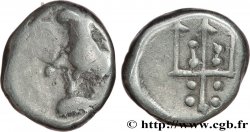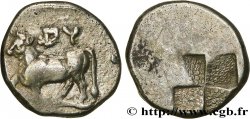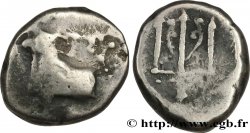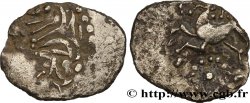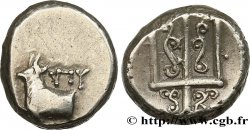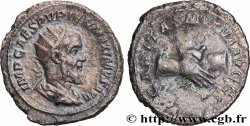Live auction - bgr_392176 - THRACE - BYZANTION Hemidrachme
You must signin and be an approved bidder to bid, LOGIN TO BID. Accounts are subject to approval and the approval process takes place within 48 hours. Do not wait until the day a sale closes to register. Clicking on "BID" constitutes acceptance of the terms of use of cgb.fr private live auctions.
Bids must be placed in whole Euro amounts only. The sale will start closing at the time stated on the item description; any bids received at the site after the closing time will not be executed. Transmission times may vary and bids could be rejected if you wait until the last second. For further information check the Live auction FAQ
All winning bids are subject to a 18% buyer’s fee.
All winning bids are subject to a 18% buyer’s fee.
| Estimate : | 250 € |
| Price : | no bid |
| Maximum bid : | no bid |
| End of the sale : | 30 January 2018 14:03:30 |
Type : Hemidrachme
Date: c. 340 AC.
Mint name / Town : Byzance, Thrace
Metal : silver
Diameter : 11 mm
Orientation dies : 6 h.
Weight : 1,85 g.
Rarity : R1
Coments on the condition:
Exemplaire sur un petit flan épais un peu court, au droit sur le protomé. Très joli revers. Patine grise superficielle avec des reflets dorés
Catalogue references :
Obverse
Obverse legend : (BY) ARCHAÏQUE.
Obverse description : Protomé de vache passant à gauche, placée sur un dauphin tourné à gauche ; au-dessous, un monogramme.
Reverse
Reverse legend : ANÉPIGRAPHE.
Reverse description : Trident vertical ornementé dans un cercle linéaire creux.
Commentary
Pour ce type, nous avons l’hémidrachme et le diobole, seuls les poids permettent de les différencier. Notre monogramme (GRL) ne semble pas recensé pour l’hemidrachme, mais se rencontre pour le tétradrachme (Babelon, Traité, p. 981-982, n° 1532). Ce type ne semble pas repris dans le traité d’Ernest Babelon avec ce monogramme.
For this type, we have the hemidrachm and the diobolus, only the weights allow us to differentiate them. Our monogram (GRL) does not seem to be recorded for the hemidrachm, but is found for the tetradrachm (Babelon, Treatise, p. 981-982, no. 1532). This type does not seem to be included in Ernest Babelon's treatise with this monogram
For this type, we have the hemidrachm and the diobolus, only the weights allow us to differentiate them. Our monogram (GRL) does not seem to be recorded for the hemidrachm, but is found for the tetradrachm (Babelon, Treatise, p. 981-982, no. 1532). This type does not seem to be included in Ernest Babelon's treatise with this monogram








 Report a mistake
Report a mistake Print the page
Print the page Share my selection
Share my selection Ask a question
Ask a question Consign / sell
Consign / sell
 Full data
Full data

